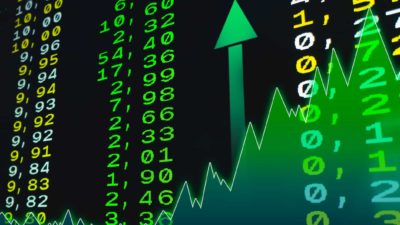Key points
- The ASX 200 took a hit following comments from the United States Federal Reserve chair Jerome Powell
- Expectations of interest rates being lifted in the US earlier is spilling over into the ASX
- Major Australian banks now forecast rate hikes to occur this year
It's been a tough few days for the S&P/ASX 200 Index (ASX: XJO). On Thursday, the market took another nose-dive after the United States Federal Reserve chair Jerome Powell made hawkish remarks about inflation.
The market is worried that central banks will be forced to bring forward interest rate increases faster than expected. This has left the ASX 200 in pain, as investors take note of Powell's signals.
But why have Australian shares been reacting to the comments of Jerome Powell? After all, he is the chair of a central bank in the United States, not Australia.
Two markets cut from the same cloth
While the decisions made by Jerome Powell involve the monetary policy of a different country, Australia — and much of the developed world — is in the same boat.
Whether it is a product of globalisation, or a coincidence, Australia and the United States are both experiencing increased inflation. This in itself isn't much of a surprise — in fact, central banks were targeting an increase in inflation.
A rebound in inflation would indicate a strengthening of the economy. For example, an increase in wages can suggest a reduction in unemployment. Furthermore, higher living costs may infer households are spending more money — a sign consumer confidence is higher.
However, inflation remains a balancing act for central banks. Let it run too hot and costs can get out of hand. But, if the hammer is brought down too hard and fast, all the economic strengthening can quickly be undone.
This is a tight rope that central banks have been trying to walk since the beginning of the COVID-19 pandemic. To date, Jerome Powell has opted to let inflation push above the target range. Similarly, our own chair of the Reserve Bank of Australia, Philip Lowe, has been cautious to suggest any rate rise in the near future.
Although, this has suddenly changed for Powell after US inflation reached 7% in December. In response, the chair hinted at its first interest rate rise occurring as early as March this year. The abrupt change of plans to the previously peddled roadmap has caught the ASX 200 index off guard.
Now, ASX investors are wary an interest rate rise could be happening sooner than previously expected in Australia.
What ASX 200 banks are forecasting for interest rates?
Soon after Jerome Powell's revised rate expectations, more revisions flowed from the major banks on their forecasts for Australia rates.
The National Australia Bank Ltd. (ASX: NAB) revealed to investors yesterday that the RBA could move to lift rates in November this year. Following this, additional increases in interest rates could happen in December 2022 and February 2023.
Meanwhile, another ASX 200 bank — Westpac Banking Corp (ASX: WBC) beat the Federal Reserve to the punch line and announced its expectations for the first rate increase in August this year. The major bank provided this forecast on 20 January, nearly a week before Powell's comments.









